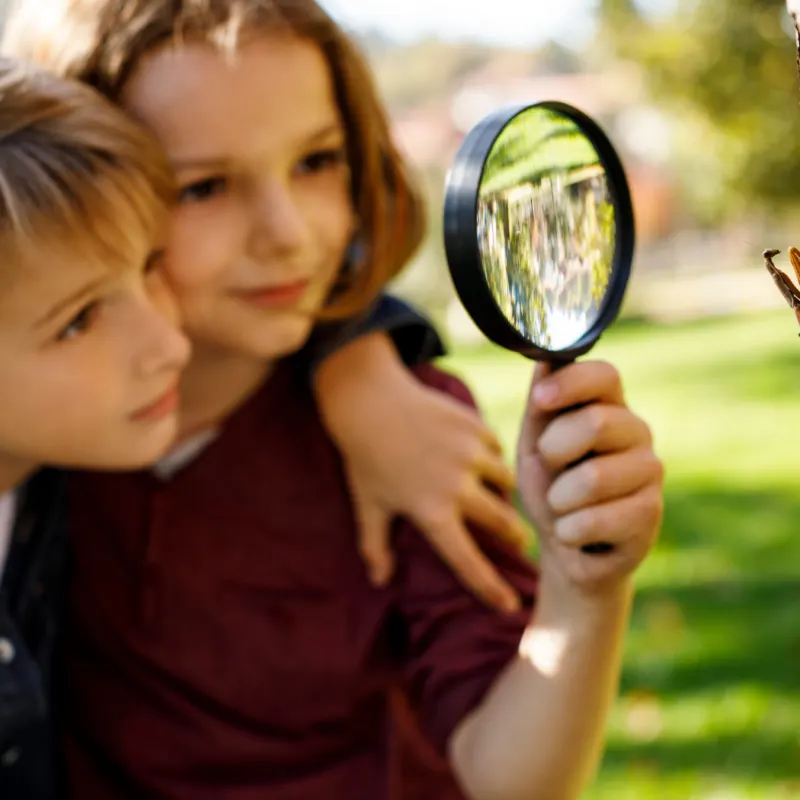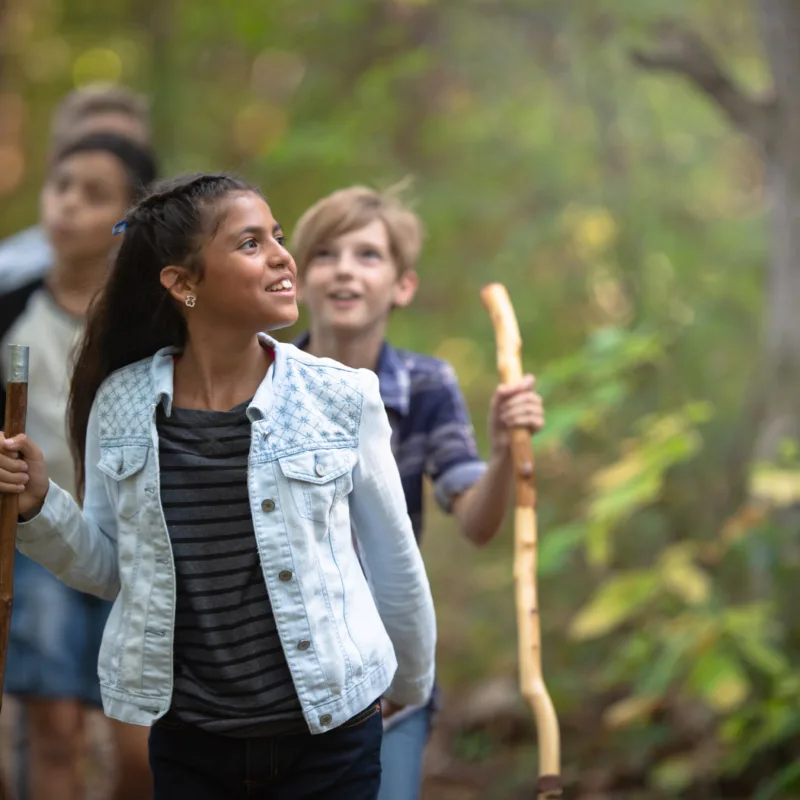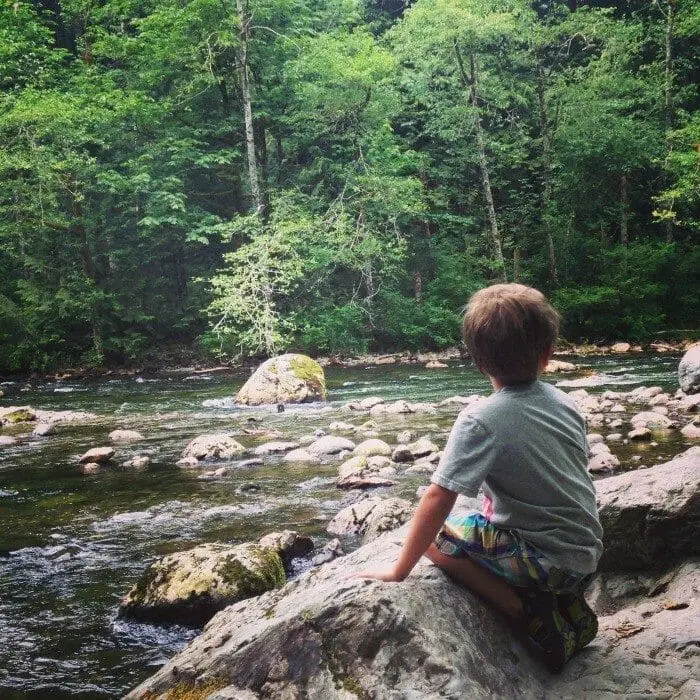
The Montessori Outdoor Education Environment
To that end, the natural environment must not be treated as a separate entity from the physical classroom. Instead, it should be an extension of Montessori’s structured environment.
Whether a teacher or parent, you can easily encourage every child to develop a close, personal relationship with nature. Montessori-based schools are typically built in harmony with the surrounding natural environment.
Trees, bushes, and landscaping features are maintained with care using eco-friendly methods, and children should have ample opportunities to spend time in nature throughout the day.
If you’re homeschooling using the Montessori method, you can make your yard or porch an integral part of your child’s classroom.

To help your students harmonize with nature, I have put together a list of some of my favorite outdoor activities:
Nature Walks
Even if your classroom is in an urban setting, you still have plenty of natural learning options. Consider scheduling regular “nature walks,” where physical activity and natural studies co-exist.
Your nature walks can be structured in the vein of scavenger hunts. Give each student a checklist of natural items to look for, such as rocks, leaves, and flowers, and a basket where they can collect their finds. Encourage your students to ask questions about each item they collect.
Older children can take nature walks with more of an ecological focus. Perhaps your students can collect litter and recyclables during their trek. As a group, discuss why it is essential to dispose of waste properly and use the discussion to help them foster positive life skills.

Gardening
Students can develop gardening skills, patience, and healthy eating habits while spending time outdoors when you have a classroom garden in place. Kids of all ages love to get their hands dirty, planting seeds and watching them grow.
Ideally, it would be best to choose edible, organic plants that can be turned into delicious snacks and meals when fully grown.
Depending on your location, an outdoor garden may be a seasonal project. Creating planting schedules for the upcoming season can keep your students interested in gardening during the colder months.
Students in over ten groups can research the types of plants ideal for the climate and even make meal plans to be used at harvest time.

Natural Work Spaces
It’s important to remember that spending time outdoors doesn’t have to involve a unique project or activity. When the weather is nice, your students can get fresh air while doing schoolwork at an outside workspace.
Whether you have a row of desks outside or a long table that can accommodate several students, your students are likely to be more productive and happier when completing work in nature rather than in a classroom.
The structured environment encouraged by Maria Montessori’s teachings encourages freedom of movement in a warm, inviting atmosphere where children can socialize and learn. An outdoor classroom, or one that strongly emphasizes nature, is the perfect place for the “whole child” to thrive.

Outdoor Education Books
Below are my favorite books to create an outdoor classroom. There are a few other resources on my bookshelves but the below references are at the top of my outdoor classroom list.
Roots, Shoots, Buckets & Boots: Gardening Together with Children is remarkably accessible to gardeners and non-gardeners alike. The activities are accessible to us adults, whether we have a green thumb or not.
We can learn alongside our children by creating hands-on learning activities like making a pizza garden and a sunflower house! Children love these activities.
Many of the activities involve a bit of patience, but there are several off-season wonders to create and imagine with your children. The book combines life science, art, and sensory learning!
I am a huge fan of Stacy Tornio, the author of Project Garden: A Month-by-Month Guide to Planting, Growing, and Enjoying ALL Your Backyard Has to Offer. This book is a beautiful mix of hands-on gardening, life sciences, and art activities. I genuinely appreciate the layout of the book.
A month-to-month approach is helpful in my planning (or my “not planning,” as the case may be). Each chapter (or “month”) includes ideas for planting, making art and other gardening-related projects, and ideas for using recycled materials.
Plus, the writing is personal and accessible. She makes us believe that we can make these activities happen with our children. Clever and creative, I highly recommend this book to create an outdoor classroom for parents, educators, and caretakers.
Bookmark the author’s website!
Edible Schoolyard: A Universal Idea is inspiring to say the least. Written by the venerable Alice Walters, the book offers a pedagogy for bringing outdoor learning into a child’s life.
She does not simply present us with ideas and activities for learning n nature. Waters describes a philosophy and an integrated approach to teaching, learning, and living with a garden.
Children not only understand how to plant and grow a garden, they learn how to take care of their bodies by identifying, developing, and harvesting organic food.
Although this holistic approach to education can appear daunting, don’t be afraid! She writes in a way that is accessible and will truly inspire you!
In other nature learning-related posts, I have written about Anna Comstock’s Handbook of Nature Study. This book is perfect for parents and educators wanting to bring nature learning into the classroom or the home.
The layout and images are vintage in their design. The photos are blurry and produced in a different era. One of the reasons I appreciate the offerings of this book so much is because the writing takes us back to the basics.
Comstock gives just enough background on various nature topics covering a large spectrum of life science learning. Perfect for an adult wanting to learn more but also to teach a young child.
The sections include basic lessons that don’t require any fancy materials. Simply knowledge, curiosity, and a little intrigue. The perfect addition to a reference shelf.
I know these suggestions may be overwhelming. So, in the meantime, here is an easy way to bring nature into your learning environment.
Marnie




